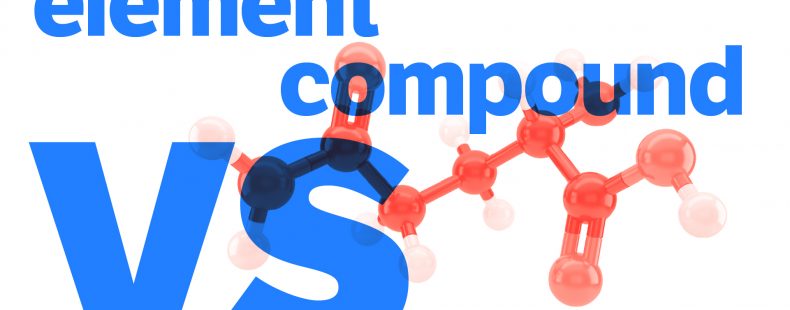⚡ Quick summary
An element is a substance that cannot be further broken down into smaller substances by chemical means, such as hydrogen (H). The periodic table of elements lists all discovered elements. A compound is a substance made of two or more elements chemically combined and with a consistent composition, such as hydrogen and oxygen combining into water (H₂O).
The terms element and compound are commonly used in chemistry. If you need a simple explanation of what these terms mean, we have your solution.
In this article, we will define the terms element and compound and explain how they are used differently in chemistry.
element vs. compound
An element is a substance that cannot be separated into simpler substances by chemical means. An element consists of an atom with a unique combination of protons, neutrons, and electrons. For example, the element hydrogen has one proton, one neutron, and one electron. We cannot use chemical methods to break hydrogen down into anything simpler.
Each element has a unique atomic number, which is the number of protons it has. This is how we identify one element from another. The periodic table of the elements lists all of the discovered elements and their atomic numbers. Examples of elements include oxygen (O), carbon (C), and gold (Au).
A compound is a substance that is made up of two or more elements and whose composition is constant. For example, the compound we call water is created by combining the elements hydrogen and oxygen. One molecule of water is always made up of two hydrogen atoms and one oxygen atom. This is why water is referred to as H₂O in science. Water is created when elements chemically combine. That is, hydrogen and oxygen form a chemical bond with each other to form water.
All three of these qualities of water show what it means for something to be a compound:
- It must be composed of two or more different elements.
- The elements must combine chemically.
- The substance must have a consistent composition.
If a substance doesn’t meet all of these qualities, it is not a compound. For example:
- Ozone (O₃) is a gas consisting of three oxygen atoms. Because ozone is made of only one element, it isn’t a compound.
- Salt water consists of water (H₂O) and salt (NaCl). There are four different elements present, but they are not all combined chemically. The water molecules and salt molecules exist together but aren’t chemically combined. Therefore, salt water is not a compound. Instead, saltwater is considered a mixture.
Other examples of compounds are salt (NaCl) and ammonia (NH₃). There are 118 discovered elements, but the number of possible compounds is theoretically very large. Compounds can be formed from potentially any number of elements, and it is possible for compounds to be very big if they are made of many chains of elements. Millions of compounds have been discovered, but this is estimated to be less than one percent of all compounds that are possible. Scientific estimates suggest that there could be as many as 10⁶⁰ different possible compounds in chemistry.














